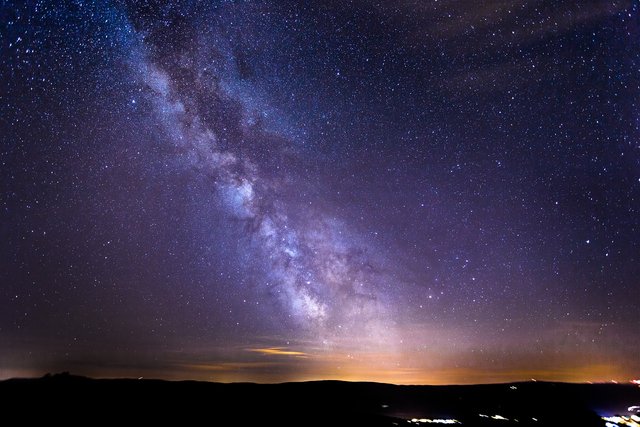The darkness of space. Why space is black?
Have you ever looked up at the night sky and wondered why it’s dark? There are two main reasons for this fascinating question. Let’s start with a concept called Olber's Paradox. Some might think space is black simply because there’s "nothing" in between stars to produce light. In a limited universe, that’s partially true. Even the Hubble Deep Field images, some of the most detailed captures of space, show that what seems like empty space often reveals stars and galaxies. Yet, even within those vast stretches, there are gaps between the galaxies and between stars within them.

As these light sources get farther from us, they appear dimmer due to the inverse-square law. Think of it like this: if you imagine a light source inside a sphere, as the distance from the source grows, the light spreads out over a larger area, reducing its intensity to the observer. But if the universe were infinite and unchanging, with stars endlessly filling every direction, the night sky would actually be bright, as though every point was covered by a star. This idea, known as Olber’s Paradox, suggests that in an infinite universe, every spot in the sky would contain light from a star. Even dust or gas clouds would reflect and radiate light, becoming as bright as stars themselves.
However, Olber’s Paradox supports a different idea—that our universe is neither infinite nor static but had a beginning and is constantly changing. In fact, scientists have measured the expansion rate of the universe, known as the Hubble Constant, at about 70 km/s for every megaparsec. Given that the universe is around 13.8 billion years old, we are limited to observing only what’s within a certain distance because galaxies beyond that limit are moving away faster than light can reach us. This boundary, known as the observable universe, means there are parts of the universe forever beyond our sight.
Distant galaxies also appear redder to us due to a process called redshift, which happens because the universe's expansion stretches light waves. Light that started in the visible range may stretch to infrared wavelengths over billions of years, making it undetectable by the human eye.
This brings us to the second reason why the night sky appears dark, and it has to do with how our eyes work. Human eyes are well-suited for daylight conditions, but at night, without strong light, our color vision fades. Although you might still recognize shapes, colors become difficult to distinguish. Interestingly, a long-exposure camera can reveal the colors that are present, even in low light. The same holds true for the night sky—Rayleigh scattering, the effect that makes our sky blue in the daytime, still happens at night but is too dim for our eyes to detect.

So, in a sense, the night sky might still be “blue,” though it appears black to us. By exploring why the night sky is dark (or blue), we answer some major questions about the universe, such as its expansion and the nature of redshift. Without this knowledge, the sky, day or night, might be filled with light from every star in existence—forever bright and dazzling.